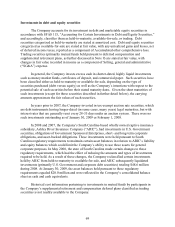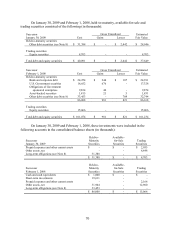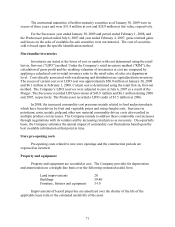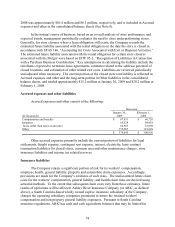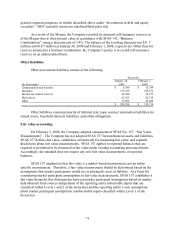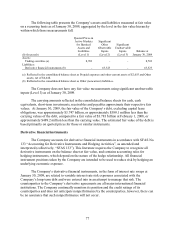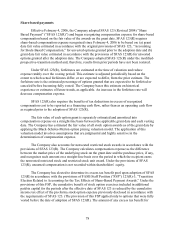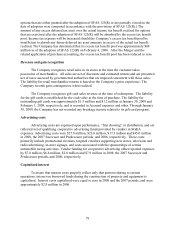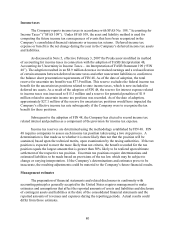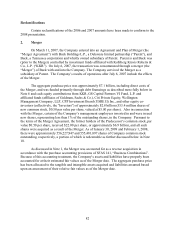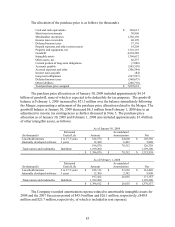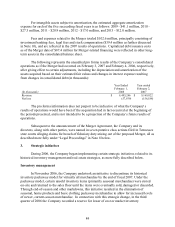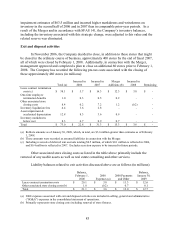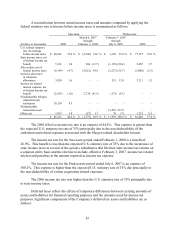Dollar General 2008 Annual Report Download - page 79
Download and view the complete annual report
Please find page 79 of the 2008 Dollar General annual report below. You can navigate through the pages in the report by either clicking on the pages listed below, or by using the keyword search tool below to find specific information within the annual report.
77
The following table presents the Company’ s assets and liabilities measured at fair value
on a recurring basis as of January 30, 2009, aggregated by the level in the fair value hierarchy
within which those measurements fall.
(In thousands)
Quoted Prices in
Active Markets
for Identical
Assets and
Liabilities
(Level 1)
Significant
Other
Observable
Inputs
(Level 2)
Significant
Unobservable
Inputs
(Level 3)
Balance at
January 30, 2009
Assets:
Trading securities (a)
8,703
-
-
8,703
Liabilities:
Derivative financial instruments (b)
-
63,523
-
63,523
(a) Reflected in the consolidated balance sheet as Prepaid expenses and other current assets of $2,055 and Other
assets, net of $6,648.
(b) Reflected in the consolidated balance sheet as Other (noncurrent) liabilities.
The Company does not have any fair value measurements using significant unobservable
inputs (Level 3) as of January 30, 2009.
The carrying amounts reflected in the consolidated balance sheets for cash, cash
equivalents, short-term investments, receivables and payables approximate their respective fair
values. At January 30, 2009, the fair value of the Company’ s debt, excluding capital lease
obligations, was approximately $3.747 billion, or approximately $380.1 million less than the
carrying values of the debt, compared to a fair value of $3.783 billion at February 1, 2008, or
approximately $489.2 million less than the carrying value. The estimated fair value of the debt is
based primarily on quoted prices for those or similar instruments.
Derivative financial instruments
The Company accounts for derivative financial instruments in accordance with SFAS No.
133 “Accounting for Derivative Instruments and Hedging Activities”, as amended and
interpreted (collectively, “SFAS 133”). This literature requires the Company to recognize all
derivative instruments on the balance sheet at fair value, and contains accounting rules for
hedging instruments, which depend on the nature of the hedge relationship. All financial
instrument positions taken by the Company are intended to be used to reduce risk by hedging an
underlying economic exposure.
The Company’ s derivative financial instruments, in the form of interest rate swaps at
January 30, 2009, are related to variable interest rate risk exposures associated with the
Company’ s long-term debt and were entered into in an attempt to manage that risk. The
counterparties to the Company’ s derivative agreements are all major international financial
institutions. The Company continually monitors its position and the credit ratings of its
counterparties and does not anticipate nonperformance by the counterparties, however, there can
be no assurance that such nonperformance will not occur.




